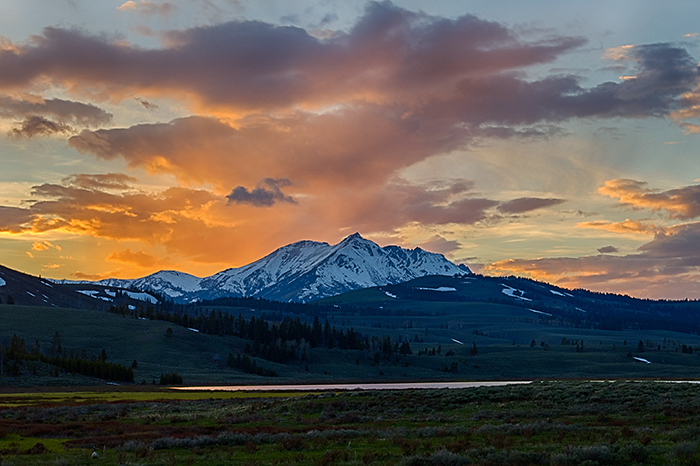On to Yellowstone
Today was an exceptional day. We had no traffic issues leaving Salt Lake City, and the drive north on Interstate 15 was gorgeous. We normally travel in the Rockies in September when the dominant colors are gold and brown. The dominant color on this trip has been lush green.
We reached Yellowstone Grizzly RV Park in West Yellowstone about 3:30, set up all the basic necessities for the motorhome, and quickly drove into the park.
Finding bison in the meadows along the Madison River was our first goal. This area is usually a very reliable area, but we weren't seeing any bison. We nearly reached Madison Junction before encountering our first "bisonjam." While most tourists stopped in the middle of the road, we found a perfect pullout and photographed the bison herd for over an hour. The bison calves were still blonde and under the constant eye of their mothers.
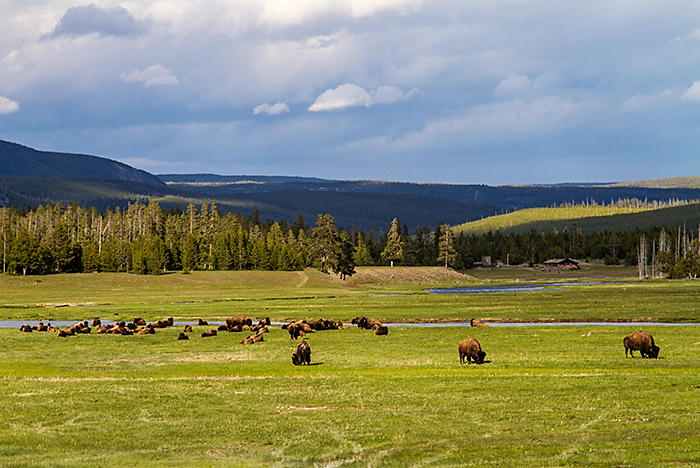 |
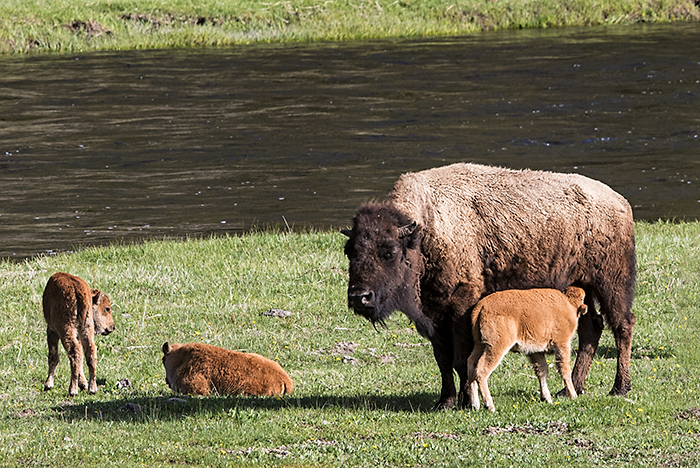 |
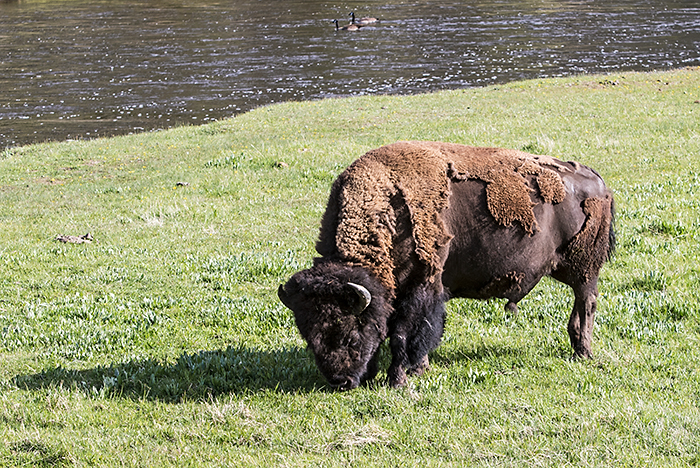 |
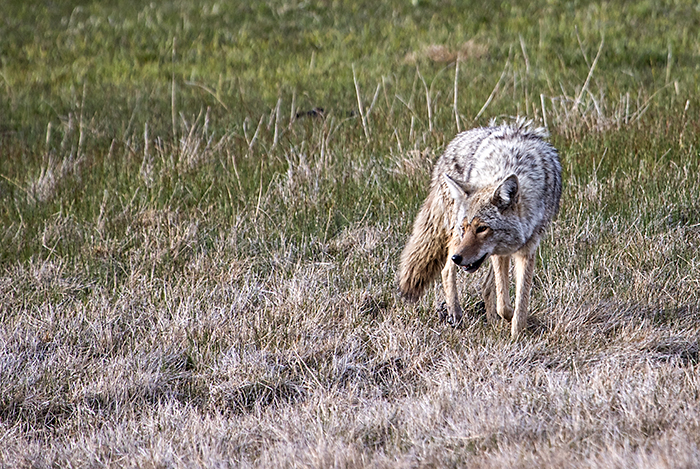 We
continued driving toward Norris until we saw a coyote
running parallel to the road in Gibbons Meadow. We found a pullout and waited for him to reach us. He trotted within about 3 feet of me without even giving me
a sideways glance. He had places to go and didn't care in the least what I was doing. He was so close to me that I had to wait for him to get farther away
in order to focus on him with my long lens. A community of ground squirrels caught his attention and warranted closer scrutiny, but he soon continued across the meadow.
We
continued driving toward Norris until we saw a coyote
running parallel to the road in Gibbons Meadow. We found a pullout and waited for him to reach us. He trotted within about 3 feet of me without even giving me
a sideways glance. He had places to go and didn't care in the least what I was doing. He was so close to me that I had to wait for him to get farther away
in order to focus on him with my long lens. A community of ground squirrels caught his attention and warranted closer scrutiny, but he soon continued across the meadow.
The meadow outside Norris Campground was a little disappointing. We expected to see herds of elk, but maybe that's a "fall thing." When we camped at Norris in my pop-up trailer, the elk in the meadow put on a show every day. Watching the bull elk gather and protect their harems was always interesting and sometimes hilarious.
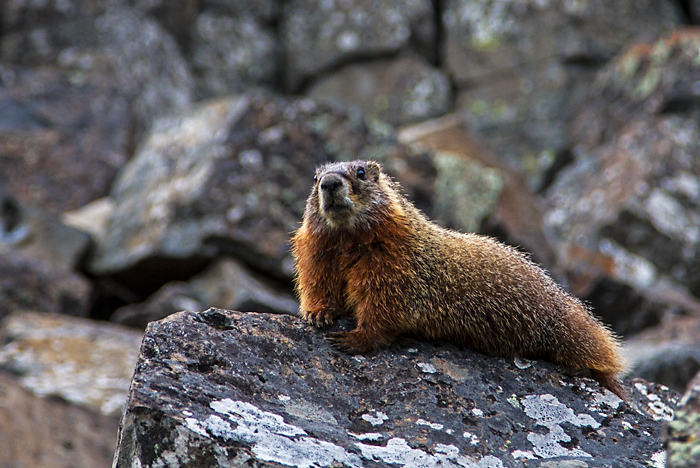 I'd read
about the marmots at Sheepeaters Cliffs Picnic Area,
and they made up for the missing elk at Norris. They were used to people and their curiousity overcame any qualms about their safety. At one point, one marmot chirped
out the alarm warning, and the group climbed higher up the talus slope. But within a couple of minutes, their curiousity won out, and they climbed right back down the talus slope to pose for us.
I'd read
about the marmots at Sheepeaters Cliffs Picnic Area,
and they made up for the missing elk at Norris. They were used to people and their curiousity overcame any qualms about their safety. At one point, one marmot chirped
out the alarm warning, and the group climbed higher up the talus slope. But within a couple of minutes, their curiousity won out, and they climbed right back down the talus slope to pose for us.
Our final destination for the day was Swan Lake, which was supposed to be a good area for wildlife. Just before Swan Lake, we spotted a group of elk in a meadow near the road. They were all females and pretty emaciated after a long winter. The only redeeming quality to the images was the warm light as the sun was setting over the Gallatin Mountains.
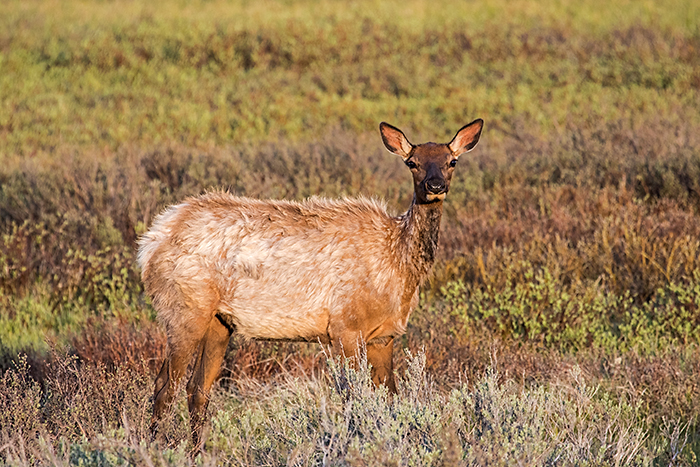 |
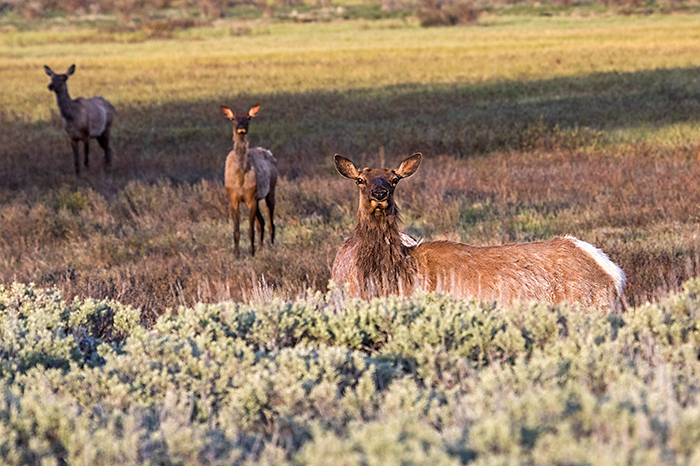 |
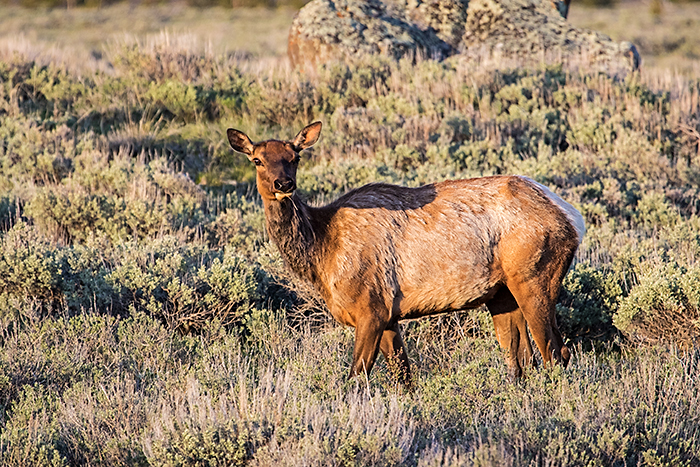 |
We joined another photographer at a turnout just before Swan Lake to photograph sunset over Electric Peak. The sunset lit the clouds and painted the sky orange. The other photographer had an entire van of fancy equipment and cameras. He was doing time-lapses, and he was no beginner. I'd love to see what he shot tonight.
The good news was that we got some good shots for sunset. The bad news was that we now had to drive the 50 miles back to camp in the dark. And just to make it more interesting, a large herd of bison decided to take over the road to create a huge bisonjam. We barely crept along for over a half hour before they finally decided to leave the highway and head off into some trees. We were wiped out by the time we got back to camp. We downloaded images and ate dinner about 11:30.
It was a very long day after driving for 5 hours and then photographing until it was dark. We're used to traveling in spring and fall when sunrises are 8:30 a.m. and sunsets are 5:30 p.m. Now sunrises are 5:30 a.m. and sunsets are 9:00 p.m. We may be too old to keep that routine of long days and short nights.


